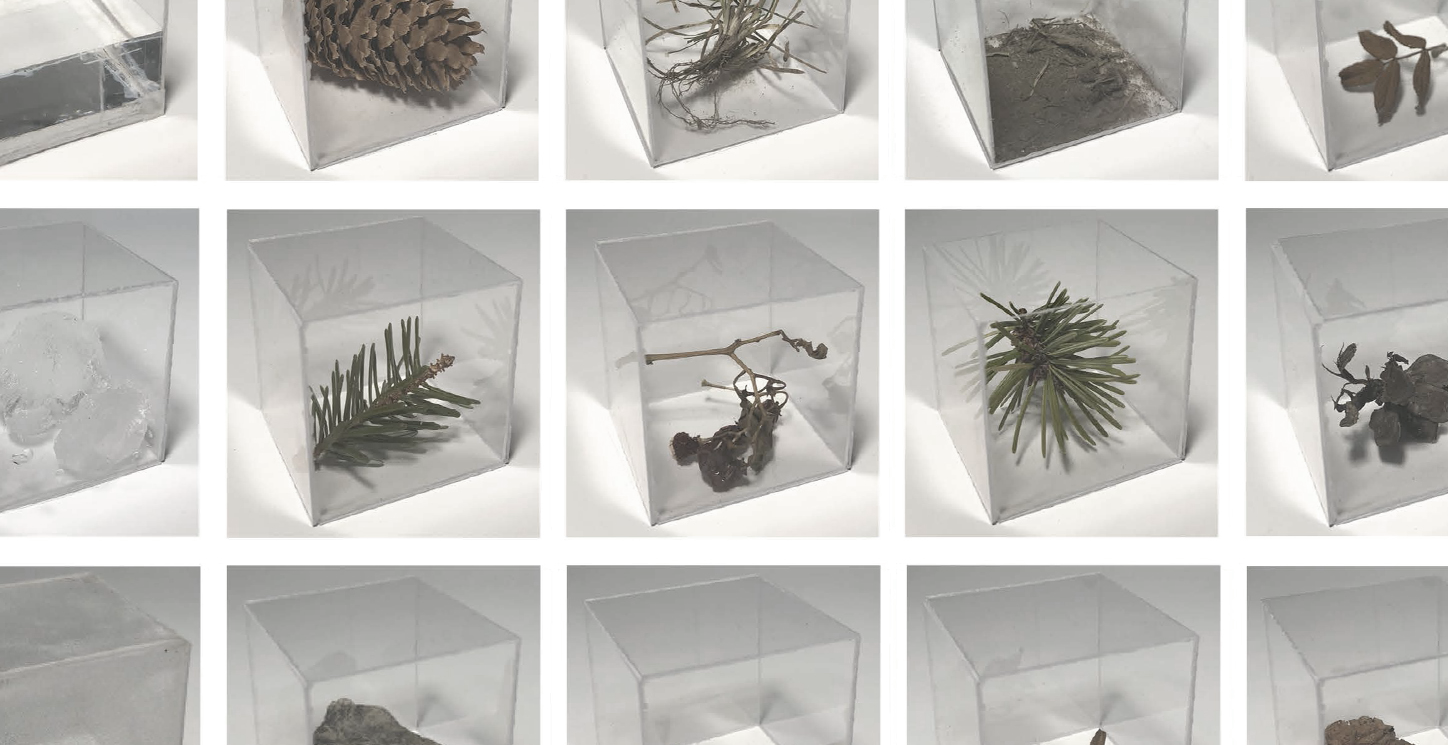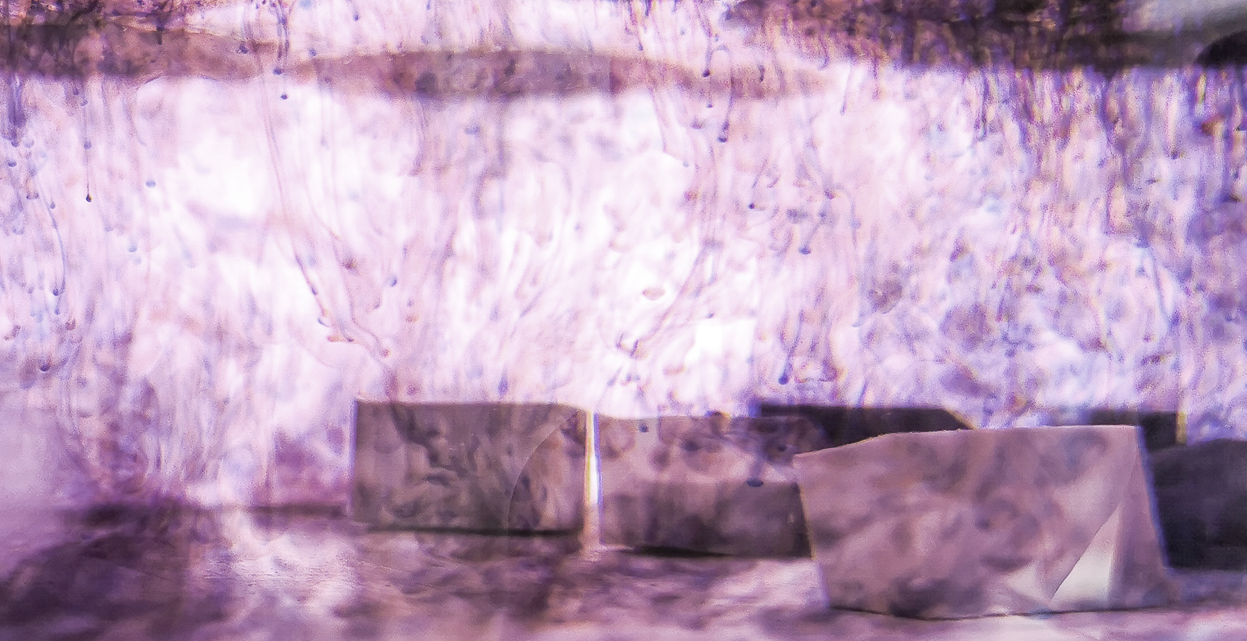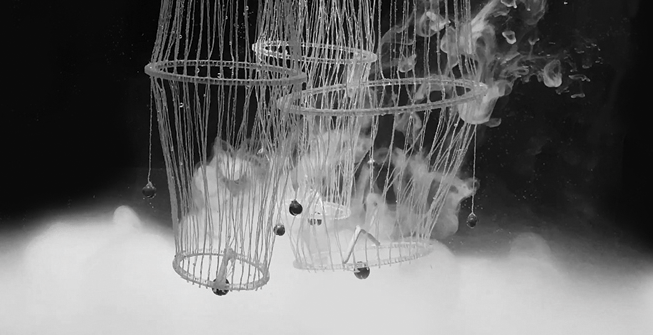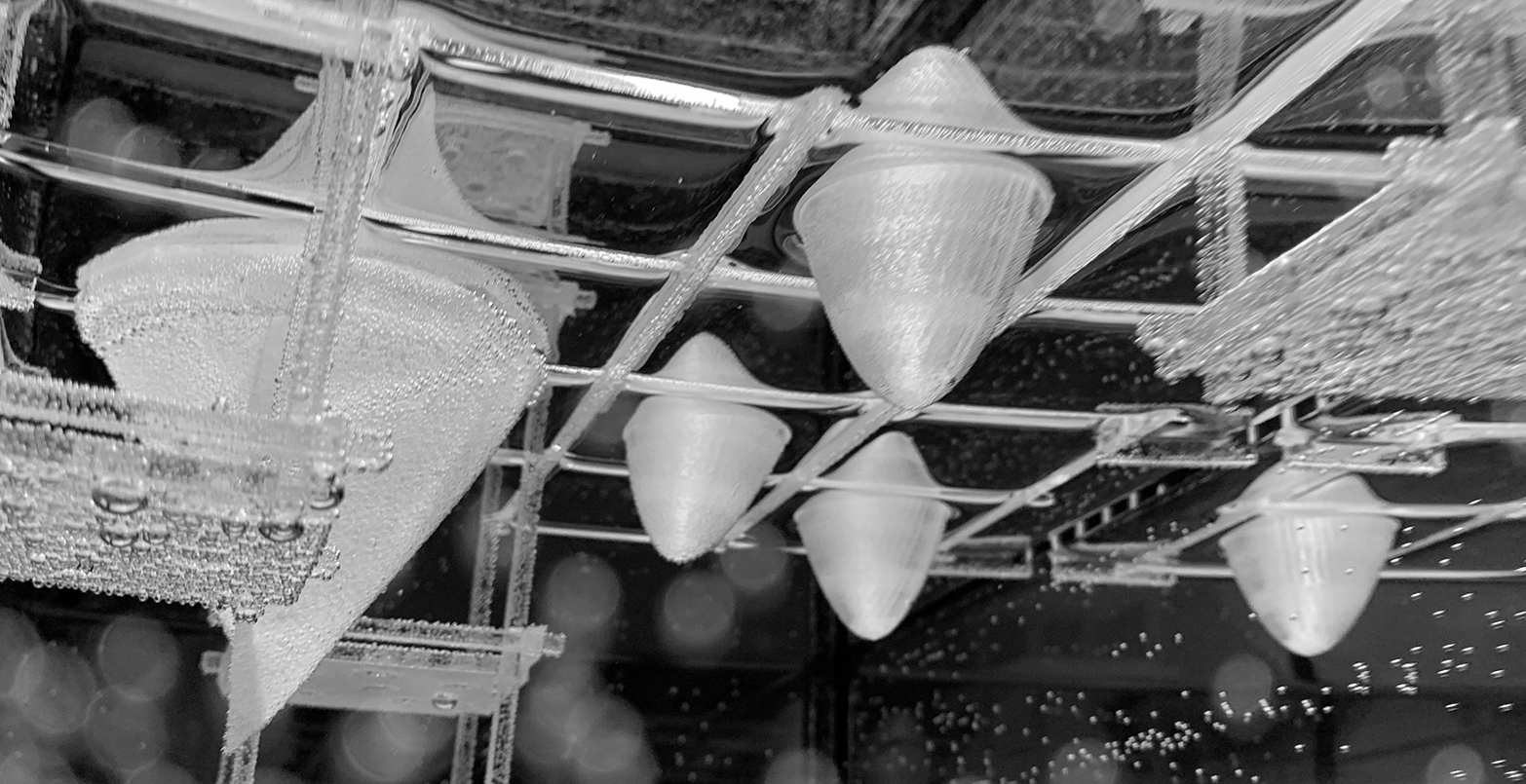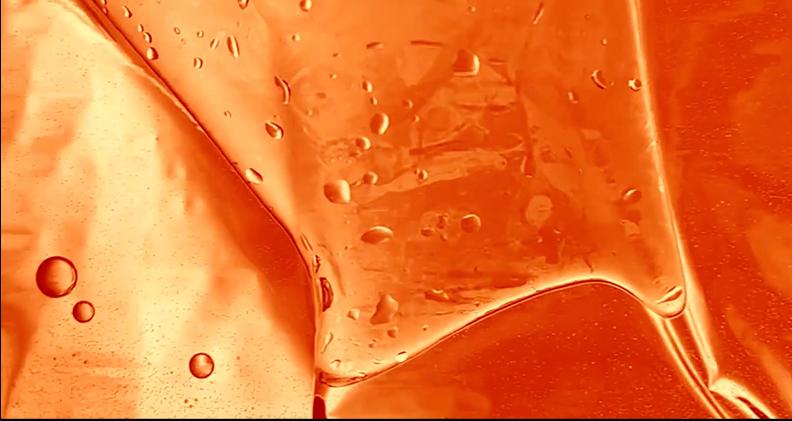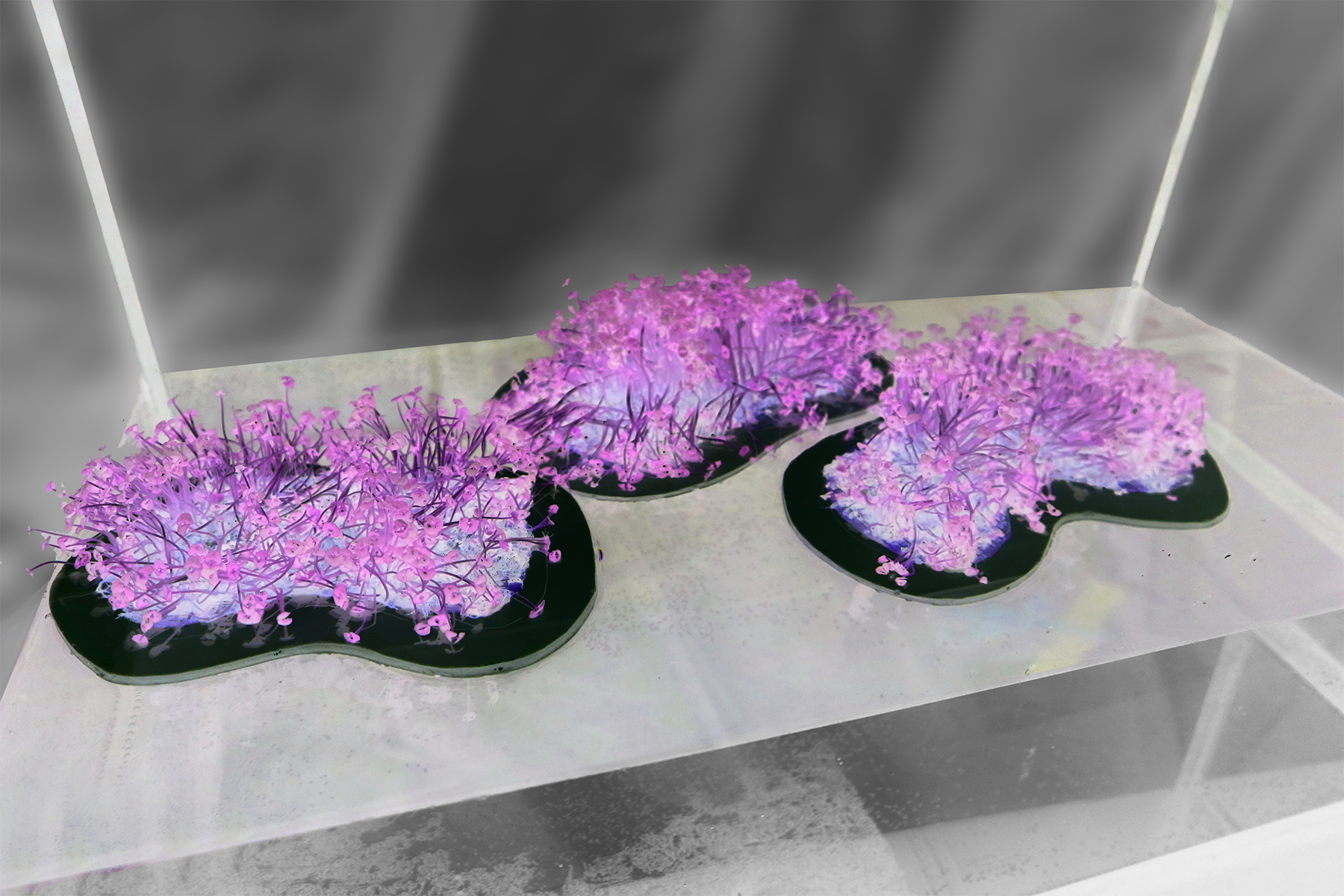Tank Worlds are
environmental models from three courses taught by Associate
Professor Lisa Moffitt at Carleton University’s Azrieli School of Architecture
and Urbanism: a thesis seminar titled ‘Miniaturising the Gigantic’ and two fourth
year undergraduate studios titled ‘Tank Worlds: Hamilton Harbour‘ and ‘Tank Worlds: Port Hope’. The three courses had differing structures and goals, but they shared a common mode of
exploration: the construction of physical models within tanks of water. Tanks
of water offer spaces of speculation about immersion in atmospheric and hydrological
environments, engaging
with the questions of scale, time, and materiality. They combine traditions of
engineering experimentation within tanks of water to test principles of building
ventilation with theoretical ideas of ‘worlding,’ or designing microcosms as
devices of future-speculation.

Harbour and Cameco Uranium Conver-sion Plant, Port Hope, Ontario.16 July 2009. Photo by Robert Del Tredici.
Design Studio
Tank Worlds: Port Hope
Students: Stephanie Alkhoury, Madelyn Byrtus, Frederic Darbouze, Nishant Dave, Noah Desjardin, Charlotte Egan, Pauline Gahunia, Tobia Graziani, Simran Kaur, Alice Luong, Megan Maksymyshyn, Ramon Renderos Soto, Sarah Van Alstyne, Dan Vu
This studio uses tank world models to develop an alternate future for Port Hope, Ontario. Port Hope is home to one of the oldest and largest uranium conversion facilities in Canada, formerly known as Eldorado Mining and Refinery Limited, located adjacent to the Port Hope harbour. Between 1933 to 1953, waste from the refining process was distributed throughout the town, leading to large-scale soil and sediment contamination. In 1987, Port Hope Harbour was officially designated as one of Canada’s nine Great Lakes ‘Areas of Concern’. The federal government commissioned the Port Hope Area Initiative Project for an extensive remediation of sites throughout Port Hope as well as the harbour itself. Remediation is well underway, but how the public will occupy remediated sites in the future is unclear.
Using tank-world models, mappings reliant on GIS and satellite imagery, and video, students designed possible futures for a portion of Port Hope harbour and surrounding areas. In the tanks, water represents both water and air; ground is constructed within and upon this shifting medium. Oil, dye, sand, and other particulates simulate airborne pollutants as well as contaminated soil and sediment. Architectural models / instruments/ infrastructures made of plexiglass, steel, plaster, and other materials are suspended within, rest upon, or sank into this fluid environment. Components dredged, contained, filtered, and sequestered contaminants, leading to design interventions that in turn act as instruments, infrastructures, and architectures of remediation, tending and caring for the site as it recovers over time.
With thanks to all of our course guests for contributing to this conversation: Karen Lutsky, Sean Burkholder, Piper Bernbaum, Elise Shelley, Paul Kariouk, and Jessica Rossi-Mastracci




